The first ever Nike Huaraches have a greater story behind them. The “hugging feet” shoe is way more than an ad. When it comes to running shoes, Nike’s record is hard to question. Some of the most innovative functional and stylistic designs are from the Swoosh.
One of the better outcomes of that continuous innovation process is the Nike Air VaporMax or the Nike Flyknit Trainer. However, in order to understand Nike Air Huarache history, it’s important to get this in mind first. For some of us, the Air Max line is the first piece of Nike innovation that comes to mind. Honestly, that’s understandable.
Nike’s inspiring line of Air cushion runners is a technological marvel and a cultural fixture. But, it turns out the catalog runs even deeper than that.
First Drop

One of the first print advertisements for the Air Huarache
Not long after Air Max makes its debut, the brand exposes consumers to something just a tad bit different. The Air Huarache is to runners’ feet what gloves are to our hands.
The original Nike Huarache 1991 rests on the promise that you get a close fit. In fact, it’s even more complex than that.
The entire shoe boasts a design that, in a lot of ways, “hugs” your feet. In the era of Nike FREE and Flyknit technology, that probably sounds a bit underwhelming. But, it’s important to remember what the market for running shoes is like back in this time.
Market Forces
Runners are in a section of footwear that is all about performance back in the 80s. Sure, there are still some folks who opt to prioritize style.
But, the running sneaker market at this point in time focuses intensely on performance. Perhaps even more specific is how the marketing took place.
Brands such as ASICS and New Balance have simple messages in those days, opting for promises of getting the job done. That, in particular, is what makes the Nike Huarache 1991 debut so special.
It drops as more than a running shoe, carrying Nike’s full advertising power. The slogan went “have you hugged your feet today?”.
It plays with an irreverence that is something of a shock at the time it launches. As the shoe nears its launch date, Nike’s marketing and design crews are in agreement: we have something truly special here.
Consequently, the Swoosh takes advantage of the shoe’s unique image. The build still looks completely different from any other runner on the market, even by more modern standards.
To compliment that, Nike’s signature clever advertising boosts this shoe to a unique spot in sneaker culture.
Hype Train
That remarkable ad campaign features some of the most memorable advertisements from that era. The 1992 TV spot with world champion sprinter Michael Johnson is an especially audacious one.
But, beyond that, the advertisements are originally about stoking some initial interest via utter curiosity. One early Huarache poster carries the script “what was that?”
That goal to get some hype going was quite simple, thanks to the shoe’s truly unique build. But, where exactly did that shape and all of its details come from?
It turns out that plenty of thought and inspiration went into this runner, helping it capture the consumer’s imagination for decades to come.
Who Made Huaraches?
It will probably be no surprise to know that the mind behind the Huarache’s build is none other than Tinker Hatfield. The man that many in the footwear industry refer to as The Architect put the sneaker together during his early days designing the Jordan line.
One of the signature elements of the Huarache is its inner sleeve. This is the source of the one-to-one fit and feel, joining outer caging to make for a different sort of running shoe.
Tinker actually takes that inspiration from water-ski booties.
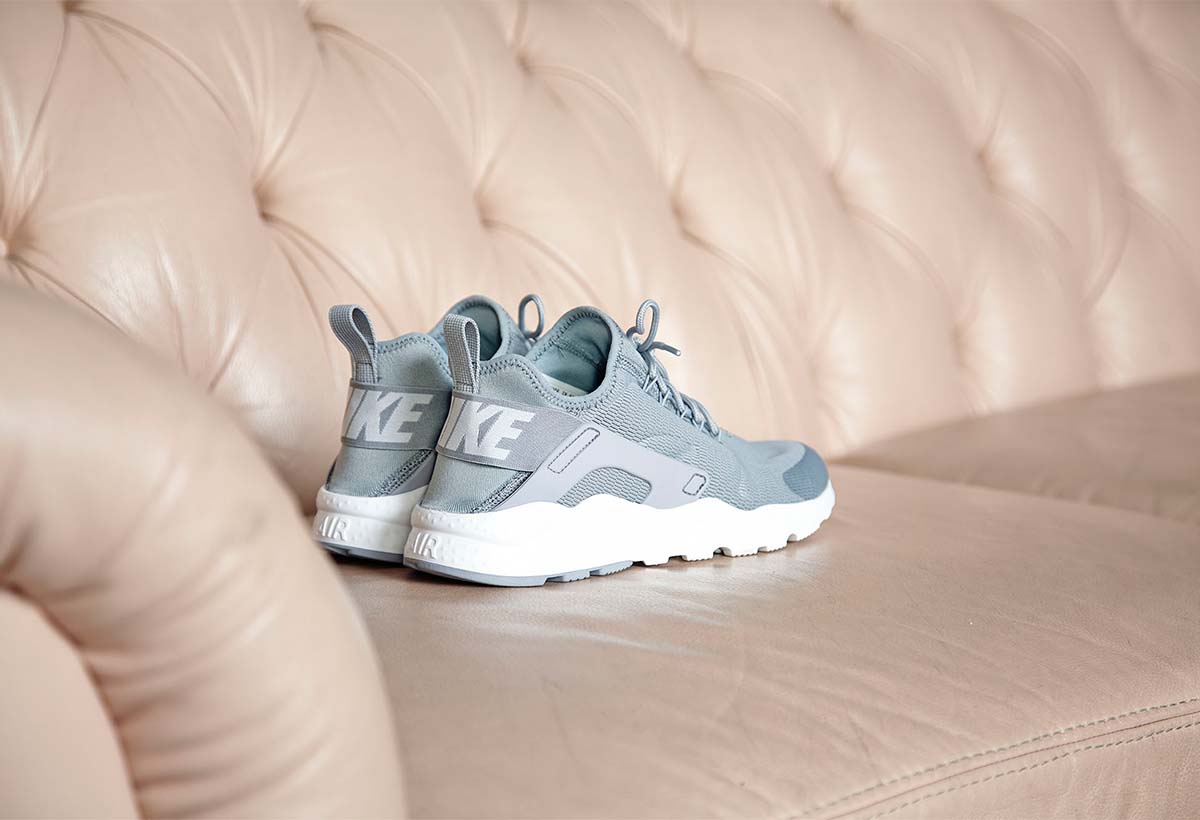
The Nike Huarache Air Ultra in Grey
Eventually calling it Dynamic Fit, this is what Tinker and the rest of the Nike design team originally highlight on the shoe. From a pure design standpoint, it’s a solid idea.
In fact, in a more modern context, that Huarache build inspires plenty of other models. But, it surprisingly didn’t do so well at first.
Not so Hot Start
Before the shoe’s 1991 release, the original model produces a sample. This is the first stage of a critical moment in Nike Air Huarache history.
Unfortunately for Tinker and the crew, the shoe’s initial sales numbers are dismal. In fact, the first 5000 samples end up with enough of a downturn to justify canceling the shoe’s production altogether.
But, in the nick of time, Nike finds something of a savior. A member of the brand’s marketing team famously proposes to sell the 5000 sample pairs in person at the New York City Marathon.
The idea is to expose consumers directly to the product, really let the target audience see what Nike is proposing. To their pleasant surprise, the plan works.
The team sells all of the sample pairs within 48 hours thanks to their guerrilla marketing efforts. After this, the real marketing campaigns begin, starting with the ones mentioned above.
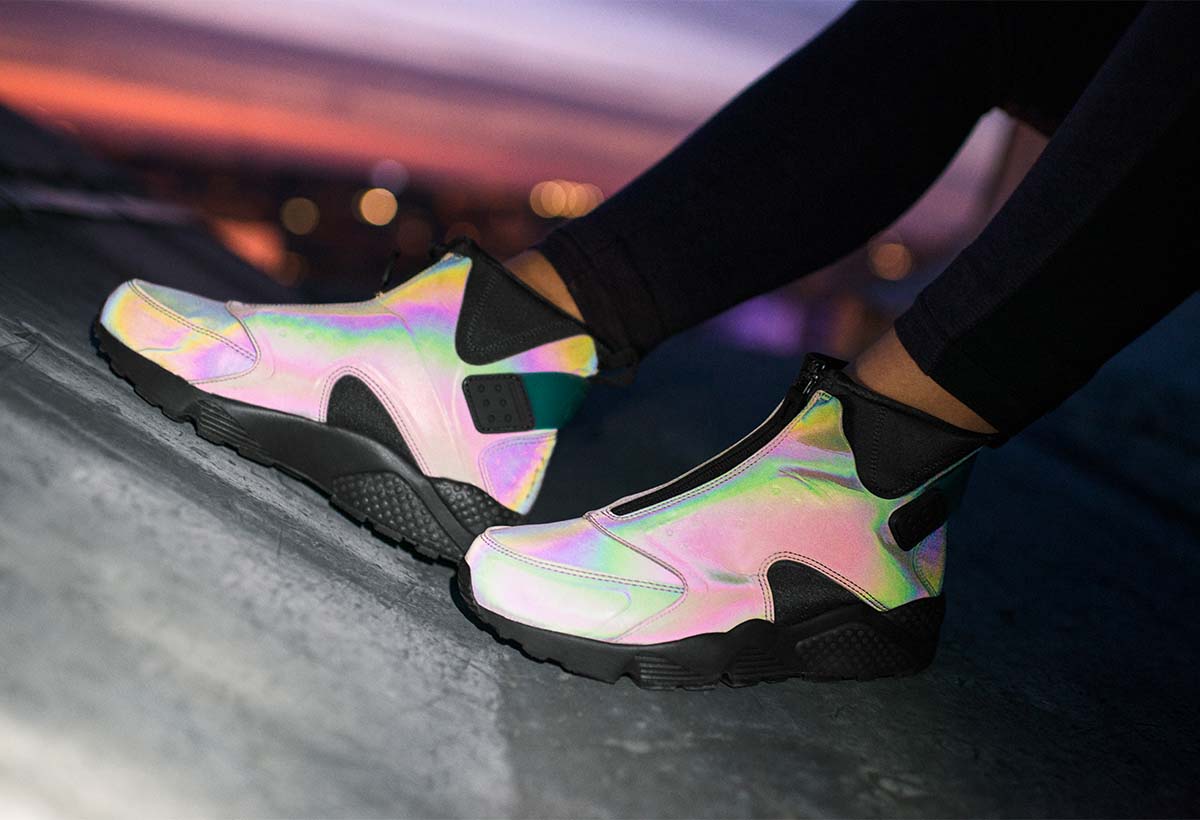
Air Huarache Mid, a Women’s exclusive
Minimalism
Though a lot of the initial thinking with the design is about form and function, there’s more. Or, perhaps it’s more accurate to say there’s less.
Tinker and co. acknowledge that designing the Huarache means that there is no compromise between uniqueness and functional quality. The shoe simply has to be the best in running tech and something completely new.
In light of that, the design team opts to go back to a familiar Nike strategy: minimalism. Tinker sees quickly that this shoe needs to be “stripped to the bare essentials,” as one of the early slogans claimed.
Consequently, all of the appeals of the Huarache are right there for consumers to see. Unlike the previous line of Nike runners, there is no need for explanations or breakdowns. The shoe breaks itself down for you.
From the inner sleeve to the caging, what you see is what you get. in fact, Tinker even decides to scale back the familiar Nike branding notes. The giant Swooshes everyone is familiar with don’t make a presence on this shoe.
This is not the first time the design team decides to go without the logo, connecting Jordan brand decisions to Nike Air Huarache history.
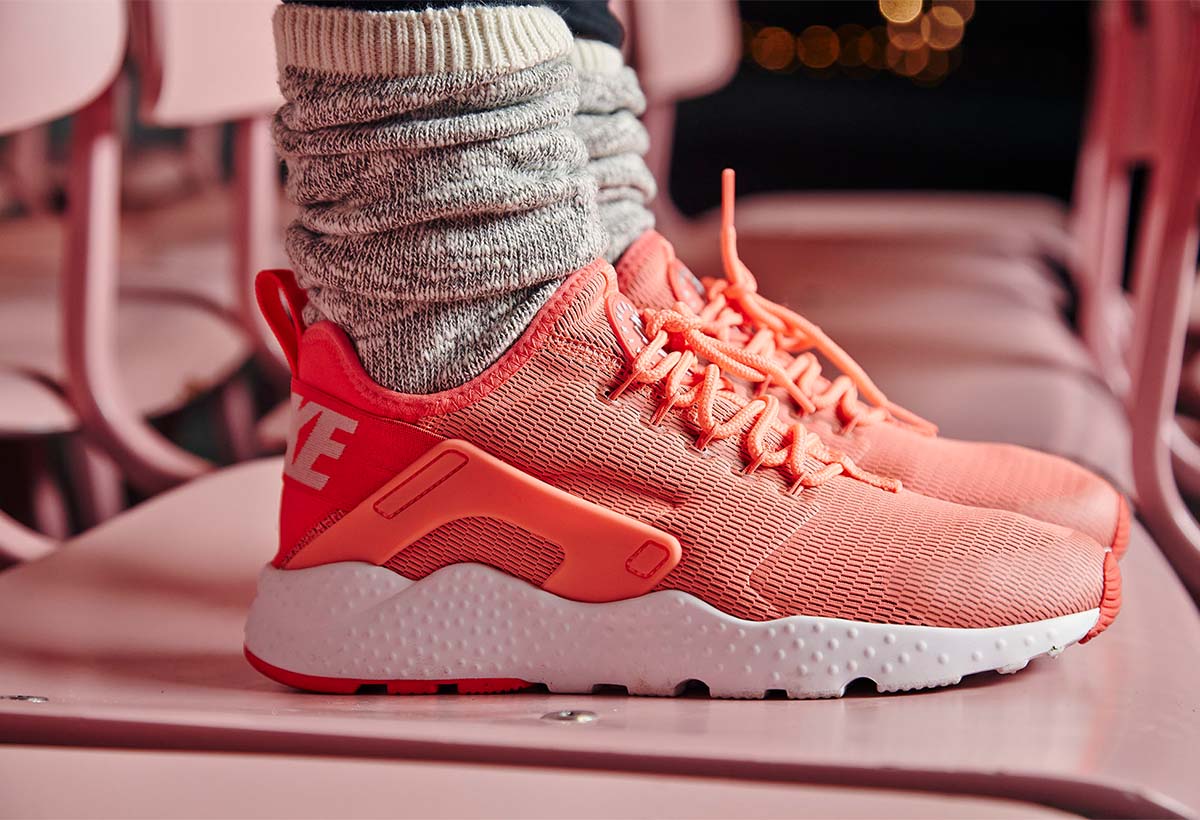
Another Air Huarache Ultra, this time in Pink – Image Credit: Solekitchen
Hitting the Hardwood
By late 1991, the Air Huarache is essentially the most hot-topic item in running circles. Not only does it meet functional needs, it stands out visually.
But, Nike’s ambitions for this innovative shoe go beyond the running category. In 1992, we get our first taste of an iconic basketball sneaker: the Nike Air Flight Huarache.
Even in today’s industry, taking running-specific tech to the basketball courts is no small task. After all, these are very different sports with varying functional requirements.
Yet, Nike finds a way to do it. 1992 also happens to be a year when much of the sports landscape meets a new icon: the Michigan Fab Five. This college basketball team, boasting names such as Chris Webber and Jalen Rose, quickly becomes a cultural fascination.
Sports fans love their flair and so do the more casual fans. As the Fab Five grow in fame – and infamy – so do their tastes for the best basketball sneakers.
Their sights eventually fall on the Nike Air Flight Huarache. The neoprene sleeve and caging system work just as well on the court as they do off of it.

The Nike Air Flight Ultra
From College to the Pros
This makes a lot of sense, considering that stability and fit are two of the most important aspects of hoops shoes. The shoe goes way beyond collegiate basketball thanks to its performance profile.
NBA greats such as Reggie Miller and Scottie Pippen spend a good portion of their careers balling in the Air Flight Huarache. Nike even makes a special PE for their young superstar at the time, Kobe Bryant.
The Purple and Yellow colorway goes on to be among the more memorable Huarache color schemes. This model even goes on to inspire another famous Nike designer to put together an iconic shoe.
Eric Avar takes the fundamental build of the Air Flight Huarache and puts together the Nike Air Zoom Zoom Huarache 2k4. To say the very least, this is a seminal moment not just for Nike Air Huarache history, but for the sport.
The majority of the NBA landscape almost immediately takes to the new shoe. Once again, Kobe Bryant gets his own colorway.
In fact, the Huarache 2k4 is considered one of the first “signature” Kobe sneakers. Avar’s design additions include a Zoom cushion bag on the heel. This is just one of the reasons why so many people have this sneaker on the top of their hoops list.
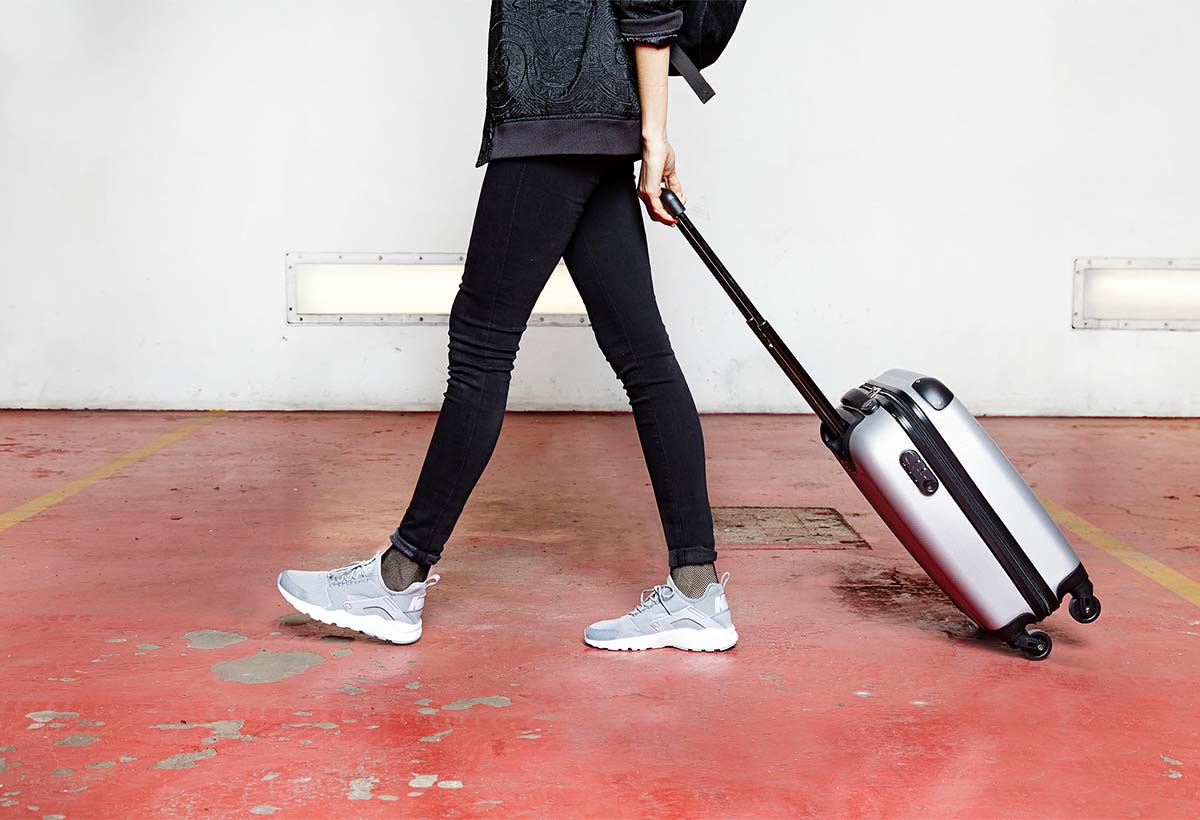
Strolling by in the Huarache Air Ultra
Continuing to Inspire
The Nike Zoom Huarache 2k4 is also among the main inspirations behind many modern basketball sneakers. In 2008, Nike comes out with the Hyperdunk model.
This introduction effectively revolutionized the hoops sneaker market. The main draw is the sneaker’s combination of durability, performance, and style.
Looking at it, it’s quite easy to spot the inspiration this shoe takes from Huarache 2k4. Leave it to Tinker to start off designing a runner and changing the basketball sneaker game while he’s at it. All in a day’s work.
Honorable Mention
We also see some other shoes evolve from the Huarache concept. Besides the 2k4, there are some obscure models as well, such as the Nike Air Huarache International.
Now, we can’t blame you for not being too familiar with this one. There are a few reasons why it goes down as one of the obscure Swoosh models to release.
Perhaps most prominently, it just so happens to originally release in 1992. It is tough for anyone sneaker to take attention away from the iconic Air Flight Huarache.
The International is also not exactly bursting with character. Minimal changes include slightly less neoprene on the toe box and going without the heel counter. Frankly, it just feels like a forced attempt at a lifestyle model.

Nike Air Huarache with FREE midsole in an OG Emerald colorway
Back to the Future
Nike Air Huarache history is not quite over and done with. The brand doesn’t seem to be ready to let go of the legendary sneaker.
Sure, official celebratory colorways are few and far between these days. But, the original Huarache design is still on designers’ minds.
Without making a ton of noise about it, Nike looks to the future of this future classic. Silhouettes such as the Nike Air Huarache Ultra are taking the mantle of this design to new heights.
In a way, they’re not doing anything new at all to the shoe. The Ultra edition of this sneaker seems like something totally different compared to what we know. But, it’s simply going back to its roots. Huarache is also the name of a traditional Mexican sandal, another inspiration for Tinker and Co.
As such, this latest rendition of the design is a 2017 drop from last Summer and intends to reflect the season. At the same time, taking the Huarache back to its early roots seems to be the best bet for its future.
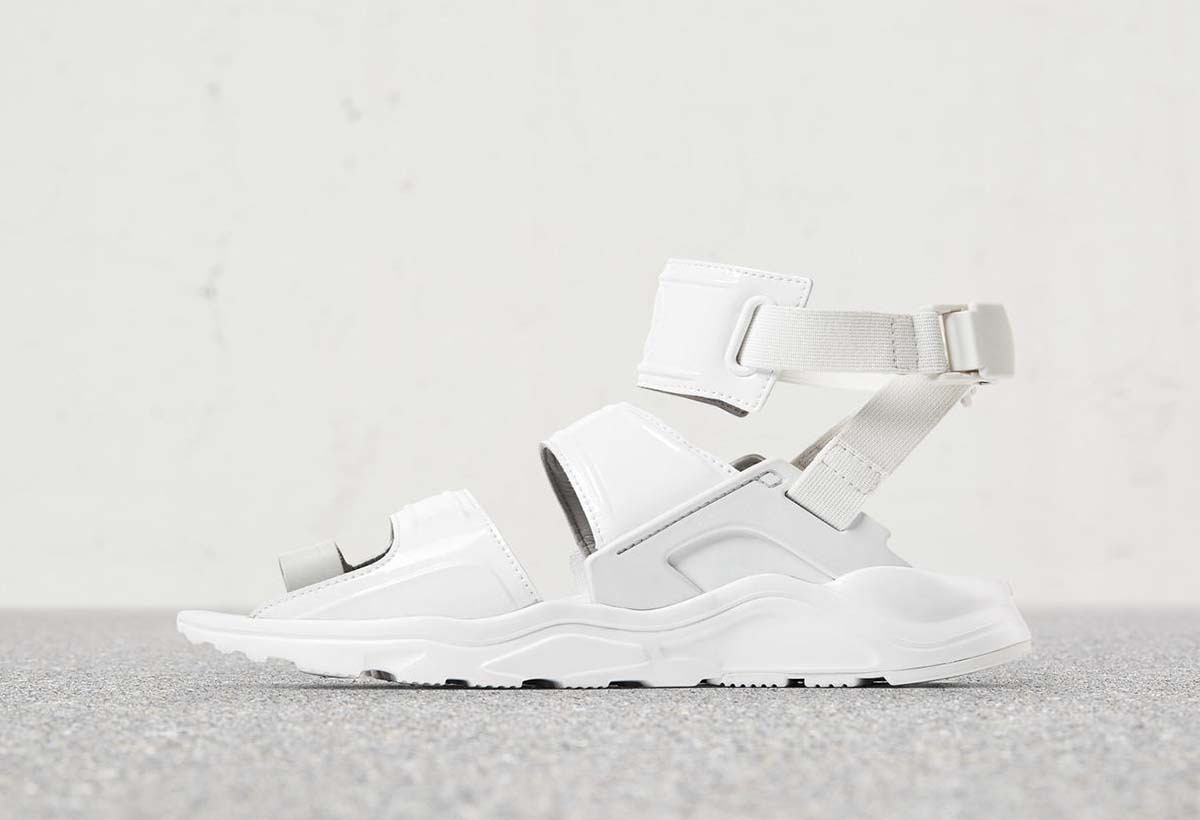
The Air Huarache Ultra Sandal
Not Without Its Faults
Now, of course, it’s worth mentioning that the Air Huarache is far from perfect. Though it packs quite the visual punch, runners and casual wearers alike express their concerns regularly.
The heel strap section of the shoe outer caging can face durability issues. With enough consistent use, you can bet this will be among the first parts of the sneaker to suffer.
Additionally, the neoprene inner sleeve does provide a one-to-one fit but runs quite small. A good number of people have had to go up as much as a full size just to get their foot in the shoe comfortably.
But, the overall picture of this shoe is quite rosy. Nike Air Huarache history is full of examples of this model’s potential.
The design is a Tinker special, which means it takes inspiration from interesting places. It also means that we can assume some future experimentation.
As we see from some of his latest Jordan work, Hatfield likes to tinker (see what I did there?) With such an illustrious past, it’s hard to imagine this sneaker going down in the books as anything less than great.
Image credits: Nike